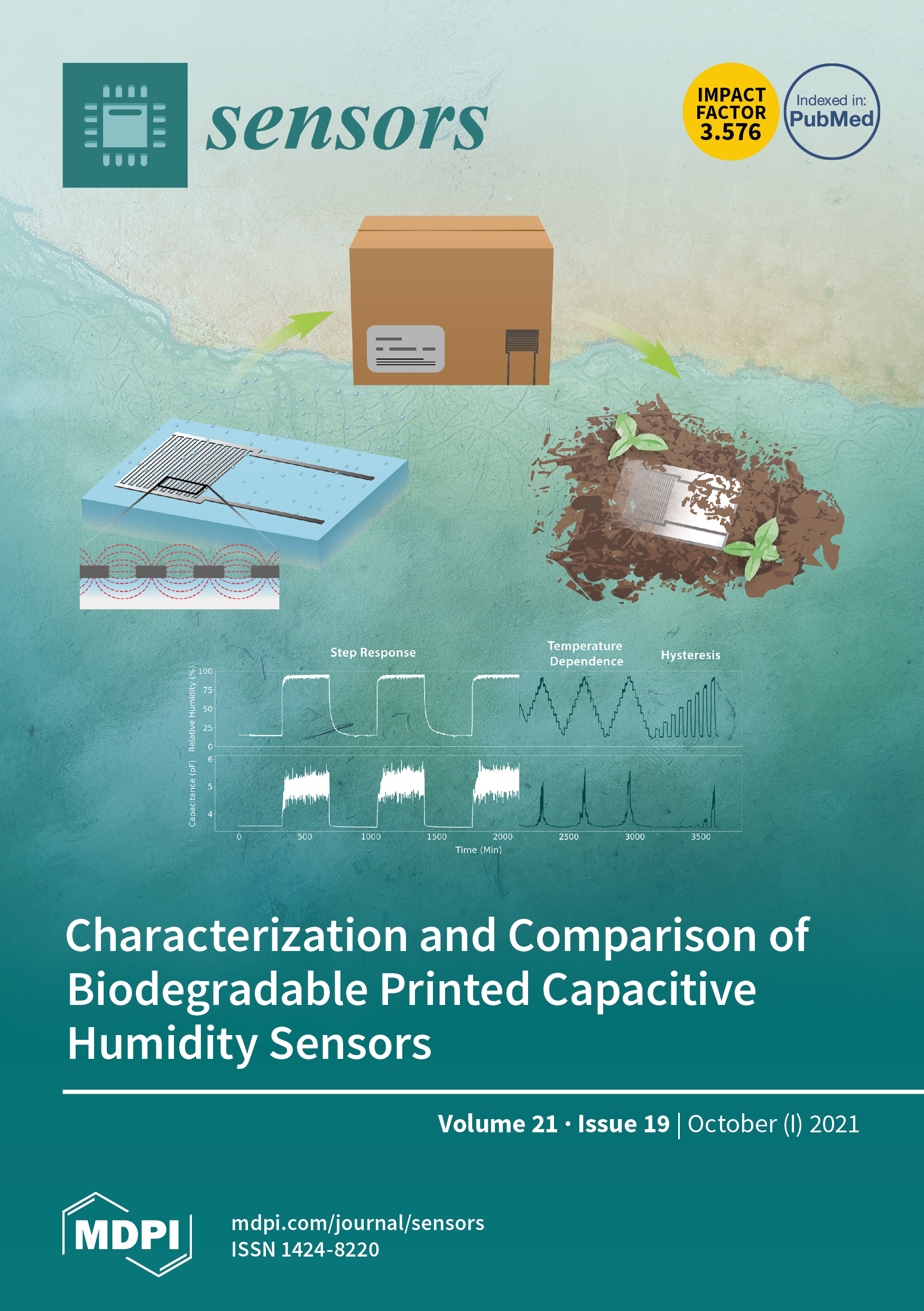Emma and Carol’s Paper made the front page of Sensors. Congrats!!!
Paper title: Characterization and Comparison of Biodegradable Printed Capacitive Humidity Sensors
Abstract: Flexible and biodegradable sensors are advantageous for their versatility in a range of areas from smart packaging to agriculture. In this work, we characterize and compare the performance of interdigitated electrode (IDE) humidity sensors printed on different biodegradable substrates. In these IDE capacitive devices, the substrate acts as the sensing layer. The dielectric constant of the substrate increases as the material absorbs water from the atmosphere. Consequently, the capacitance across the electrodes is a function of environmental relative humidity. Here, the performance of polylactide (PLA), glossy paper, and potato starch as a sensing layer is compared to that of nonbiodegradable polyethylene terephthalate (PET). The capacitance across inkjet-printed silver electrodes is measured in environmental conditions ranging from 15 to 90% relative humidity. The sensitivity, response time, hysteresis, and temperature dependency are compared for the sensors. The relationship between humidity and capacitance across the sensors can be modeled by exponential growth with an R2 value of 0.99, with paper and starch sensors having the highest overall sensitivity. The PET and PLA sensors have response and recovery times under 5 min and limited hysteresis. However, the paper and starch sensors have response and recovery times closer to 20 min, with significant hysteresis around 100%. The PET and starch sensors are temperature independent, while the PLA and paper sensors display thermal drift that increases with temperature.
Publication:
-

Characterization and Comparison of Biodegradable Printed Capacitive Humidity Sensors
Emma Wawrzynek,
Carol Baumbauer,
and
Ana C. Arias
Sensors,
2021
21,
19.
[Abstract]
[Bibtex]
[PDF]
Flexible and biodegradable sensors are advantageous for their versatility in a range of areas from smart packaging to agriculture. In this work, we characterize and compare the performance of interdigitated electrode (IDE) humidity sensors printed on different biodegradable substrates. In these IDE capacitive devices, the substrate acts as the sensing layer. The dielectric constant of the substrate increases as the material absorbs water from the atmosphere. Consequently, the capacitance across the electrodes is a function of environmental relative humidity. Here, the performance of polylactide (PLA), glossy paper, and potato starch as a sensing layer is compared to that of nonbiodegradable polyethylene terephthalate (PET). The capacitance across inkjet-printed silver electrodes is measured in environmental conditions ranging from 15 to 90% relative humidity. The sensitivity, response time, hysteresis, and temperature dependency are compared for the sensors. The relationship between humidity and capacitance across the sensors can be modeled by exponential growth with an R2 value of 0.99, with paper and starch sensors having the highest overall sensitivity. The PET and PLA sensors have response and recovery times under 5 min and limited hysteresis. However, the paper and starch sensors have response and recovery times closer to 20 min, with significant hysteresis around 100%. The PET and starch sensors are temperature independent, while the PLA and paper sensors display thermal drift that increases with temperature.
@article{Emma_sensors,
author = {Wawrzynek, Emma and Baumbauer, Carol and Arias, Ana C.},
title = {Characterization and Comparison of Biodegradable Printed Capacitive Humidity Sensors},
year = {2021},
doi = {10.3390/s21196557},
publisher = {MDPI},
url = {https://www.mdpi.com/1424-8220/21/19/6557#},
journal = {Sensors},
volume = {21},
number = {19},
thumbnail = {emma2021humidity.png},
pdf = {emma2021humidity.pdf}
}
 Characterization and Comparison of Biodegradable Printed Capacitive Humidity Sensors Sensors, 2021 21, 19. [Abstract] [Bibtex] [PDF]
Characterization and Comparison of Biodegradable Printed Capacitive Humidity Sensors Sensors, 2021 21, 19. [Abstract] [Bibtex] [PDF]